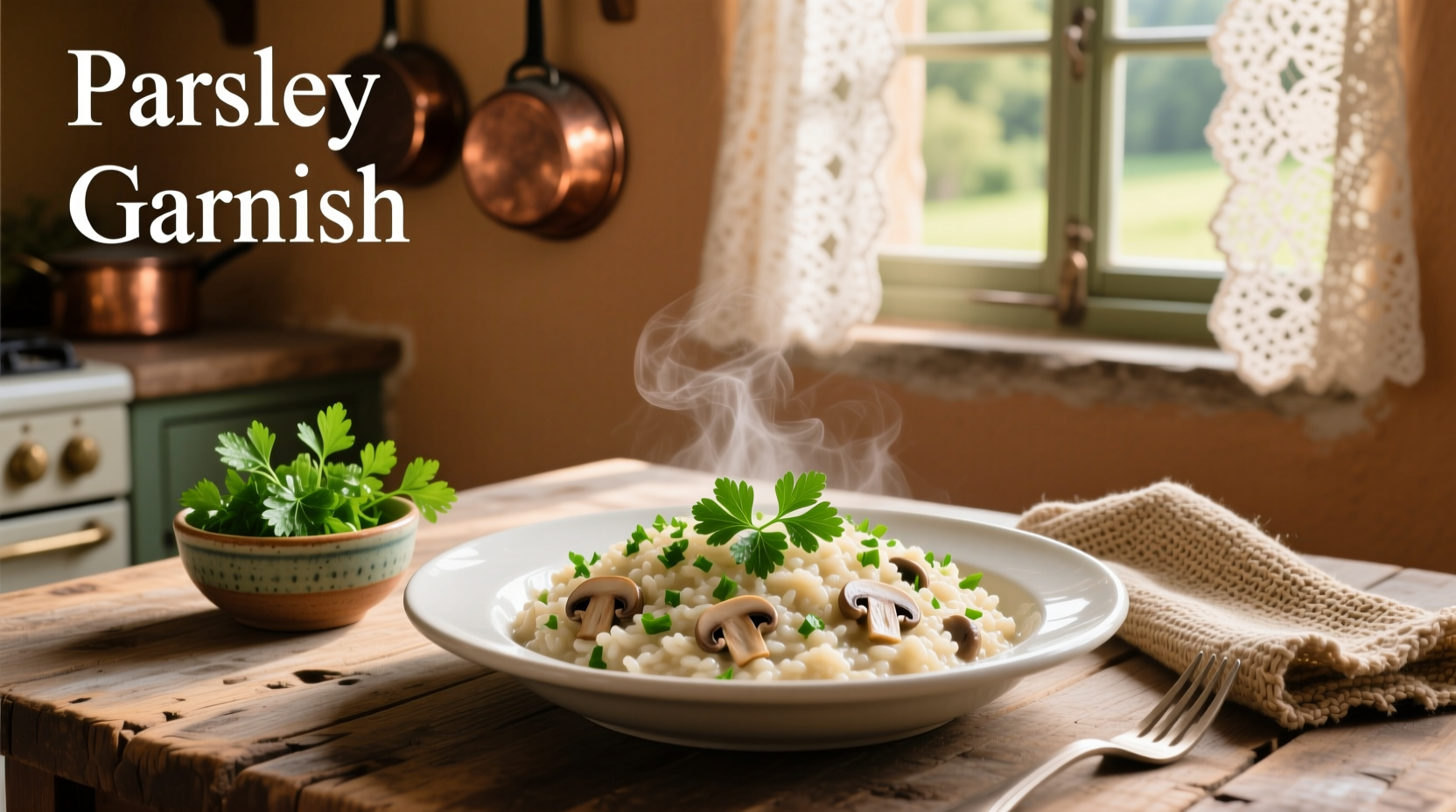Why Parsley Deserves Center Stage in Your Meals
Most home cooks relegate parsley to the plate's edge as mere decoration, but professional chefs treat it as a foundational ingredient. Flat-leaf (Italian) parsley offers bold, peppery notes perfect for sauces and salads, while curly parsley provides milder freshness ideal for finishing dishes. Understanding these distinctions unlocks parsley's true potential across global cuisines.
| Parsley Type | Flavor Profile | Best Culinary Applications | Storage Duration |
|---|---|---|---|
| Flat-leaf (Italian) | Bold, peppery, slightly bitter | Sauces, marinades, grain salads, cooked dishes | 10-14 days refrigerated |
| Curly parsley | Milder, grassier, more delicate | Garnishes, cold dishes, finishing touches | 7-10 days refrigerated |
Parsley-Forward Meals Across Global Cuisines
When parsley constitutes 15% or more of a dish's ingredients, it transitions from accent to essential component. These culturally authentic preparations showcase parsley's starring role:
Mediterranean Classics
Lebanese Tabbouleh reverses the typical grain-to-herb ratio, featuring bulgur wheat as the minority component amid a sea of finely chopped parsley and mint. The USDA's National Nutrient Database confirms that parsley provides 842% of your daily vitamin K in just one cup, making this salad both flavorful and nutritionally dense.
Greek Dolmades with Parsley incorporate the herb directly into the rice filling rather than just as a garnish, creating a more complex flavor profile that complements the grape leaves.
Middle Eastern Specialties
Lebanese Fattoush Salad gains its distinctive character from copious amounts of parsley blended with crispy pita and sumac dressing. Food historians note that parsley has been cultivated in the Levant for over 2,000 years, explaining its deep integration into regional cooking traditions.
Chimichurri Sauce (Argentina/Uruguay) traditionally contains equal parts parsley and cilantro, though authentic versions emphasize flat-leaf parsley as the primary herb. This vibrant sauce transforms grilled meats through its acid-herb balance.
European Traditions
French Persillade combines equal parts minced parsley and garlic as a finishing touch for meats, vegetables, and soups. Culinary experts at Le Cordon Bleu emphasize that adding this mixture after cooking preserves parsley's bright flavor compounds.
Italian Gremolata features parsley as the base for this classic veal osso buco accompaniment, where lemon zest and garlic complement rather than overwhelm the herb's freshness.
Professional Techniques for Maximizing Parsley Flavor
Home cooks often make these critical mistakes with parsley that diminish its impact:
- Adding too early - Parsley's volatile oils dissipate with prolonged heat. Add flat-leaf parsley in the last 2 minutes of cooking; use curly parsley exclusively as a fresh garnish
- Improper storage - Keep parsley stems in water like flowers, covered loosely with a plastic bag in the refrigerator (per USDA Food Safety guidelines)
- Washing too soon - Moisture accelerates spoilage. Wash parsley only immediately before use
For intense flavor extraction, try parsley oil infusion: Blend 1 cup packed flat-leaf parsley with 1 cup neutral oil, then strain through cheesecloth. This technique preserves parsley's essence for sauces and dressings when fresh herbs aren't available.

Parsley's Nutritional Powerhouse Status
Beyond flavor, parsley delivers remarkable nutritional benefits that make it worth featuring prominently in meals. According to the National Institutes of Health's Office of Dietary Supplements, just one-quarter cup of fresh parsley provides:
- 207% of your daily vitamin K requirement
- 14% of daily vitamin C
- Significant amounts of vitamin A and folate
These nutrients support bone health, immune function, and blood clotting—making parsley-forward meals both delicious and health-promoting.
Transform Your Cooking with Parsley-Centric Meals
When you treat parsley as a primary ingredient rather than an afterthought, your cooking gains complexity and freshness. Start with these simple swaps:
- Replace half the basil in pesto with flat-leaf parsley for a brighter, more versatile sauce
- Add chopped parsley to scrambled eggs (1 tablespoon per egg) before cooking
- Blend parsley stems into vegetable stocks instead of discarding them
- Create a parsley-heavy salsa verde with capers and anchovies for fish
These practical applications demonstrate why professional kitchens use pounds of parsley weekly—it's not garnish, but essential flavor architecture. By featuring parsley prominently in your meals, you'll achieve restaurant-quality results with simple, accessible ingredients.
Frequently Asked Questions
Can I substitute dried parsley for fresh in these recipes? Dried parsley loses most volatile flavor compounds and works poorly as a substitute in parsley-forward dishes. Fresh is essential for the vibrant flavor profile these meals require.
How do I prevent parsley from turning brown after chopping? Toss chopped parsley with a few drops of neutral oil immediately after cutting. The oil creates a protective barrier against oxidation while enhancing flavor release.
What's the best way to freeze parsley for long-term use? Blend parsley with equal parts olive oil, then freeze in ice cube trays. These herb cubes maintain flavor for up to 6 months and can be added directly to sauces and soups.
Why do some recipes call specifically for parsley stems? Stems contain concentrated flavor compounds and work particularly well in stocks, sauces, and when finely minced into salads. Don't discard them—they're flavor powerhouses.











 浙公网安备
33010002000092号
浙公网安备
33010002000092号 浙B2-20120091-4
浙B2-20120091-4